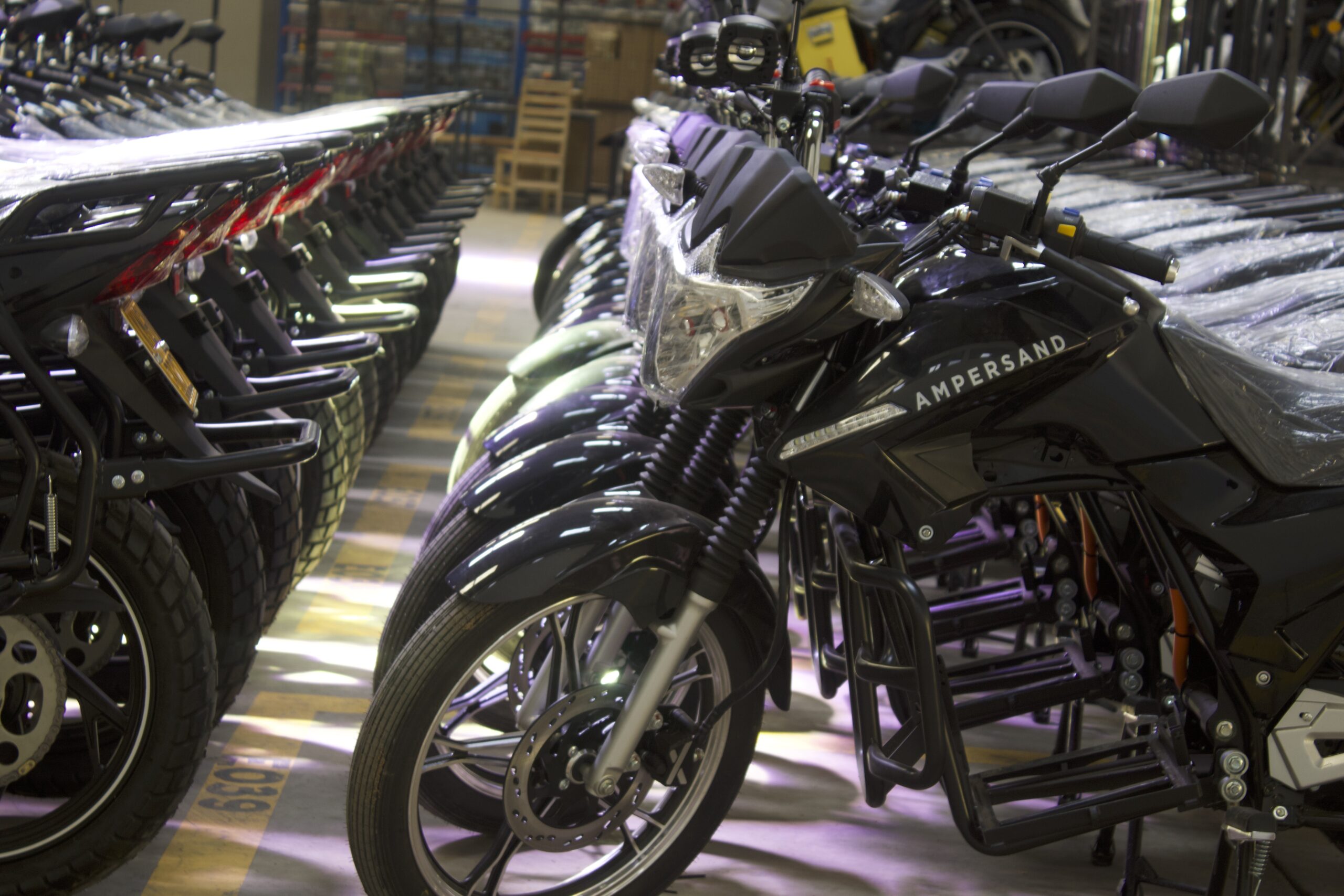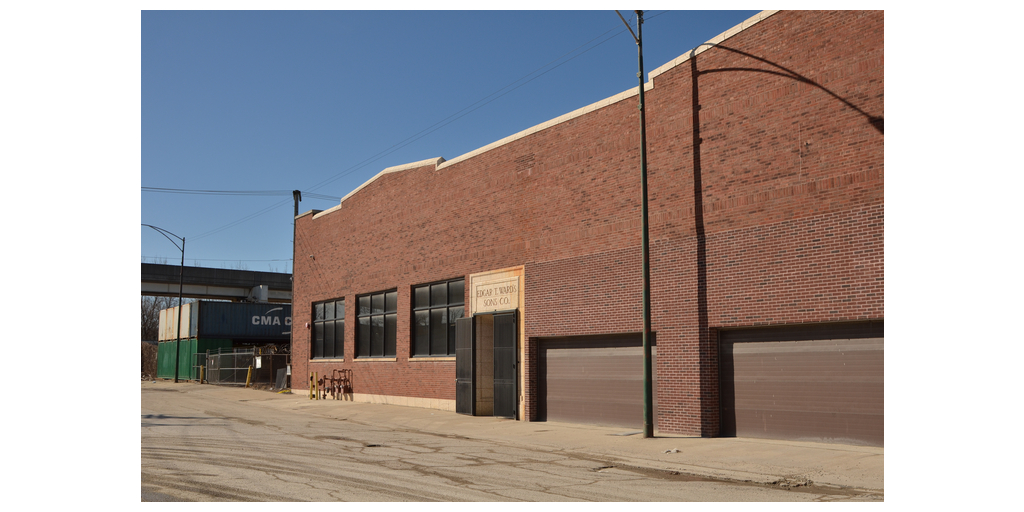Support CleanTechnica’s work through a Substack subscription or on Stripe.
I was first introduced to Atalanta Climate at the Hardware Meetup for Climate Week NYC. The company had been carting visually intriguing prototypes of their Ovi carbon dioxide (CO2) removal devices around the city on trailers behind bikes, showing them to both interested locals and global leaders in town for the UN Climate Summit. While this is not the only CO2 removal system, the indoor application addressing both health and environmental concerns was interesting. Through followup conversations, as I started to wrap my head around the technology and applications, it only became more interesting.
The idea for the company originated from founder Sally Chen’s experience in San Francisco during the California wildfires. Opening windows represented a health hazard, and ventilation let smoke in.Unfortunately, wildfires are likely to become more prevalent due to climate change. In many areas, trees are burning faster than people can plant them. The need for air purification continues to grow, as does the need to address CO2 levels. Sally’s software background combined with the chemistry and hardware expertise of cofounder Lucas Dong, a PhD in Environmental Engineering and professor at Georgia Tech, to create Atalanta Climate.
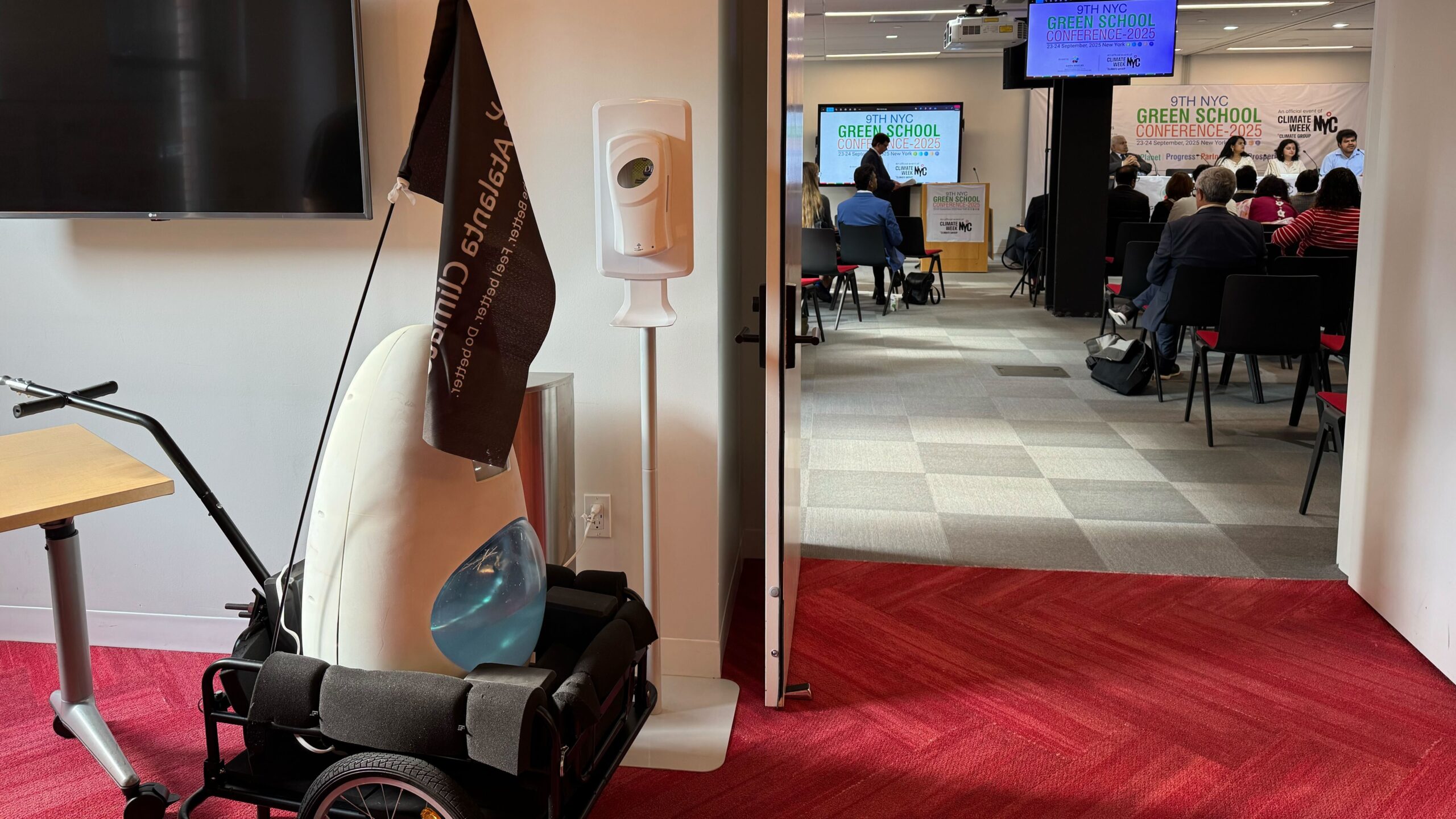
The Challenge of Indoor CO2
Indoor carbon dioxide levels can be multiple times the concentrations in outdoor air. The higher concentrations make capturing carbon from the air more effective. However, CO2 also has indoor health implications.
ASHRAE has set new standards for indoor levels, citing “direct impacts of CO2 on health, well-being, learning outcomes, sleep patterns, and work performance.” While indoor carbon dioxide does not tend to reach fatal levels, it can often rise to concentrations that hinder oxygen absorption. That can affect health and cognitive function, especially for people with lung conditions like COPD or breathing disorders like sleep apnea. Carbon dioxide toxicity, or hypercapnia, can be exacerbated by high indoor CO2 levels for people with pre-existing conditions. Based on research out of Harvard, decision making ability can be significantly impaired by the elevated CO2 levels sometimes found in indoor environments. However, this should not be confused with carbon monoxide poisoning, which is lethal at much lower concentrations.
The increased insulation and sealing of buildings to reduce energy consumption has made them more airtight. While this can reduce carbon emissions associated with heating and cooling a building, it can also increase indoor CO2 concentrations. In addition, the tendency of some companies to try to squeeze more people into smaller office spaces can also increase carbon dioxide levels.
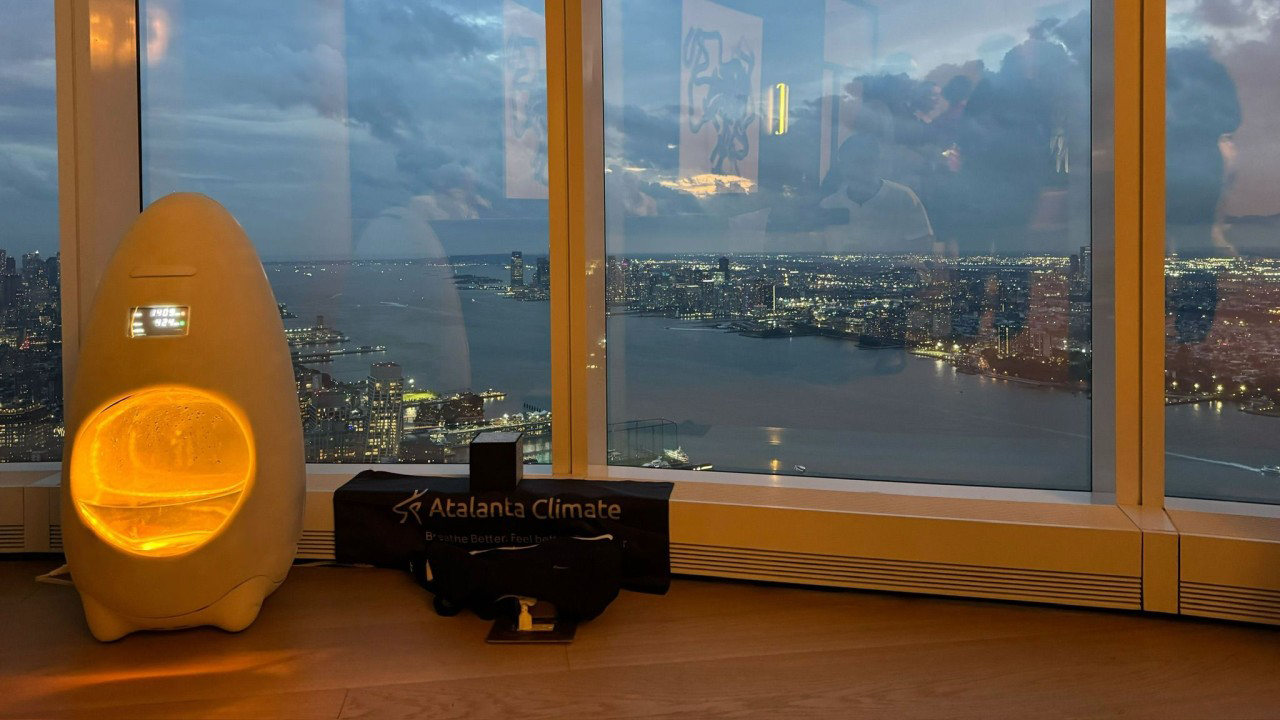
The Ovi
The indoor carbon capture and air purification device uses an egg-shape design intended to symbolize rebirth and regeneration. Standing a little less than a meter tall, it is not obtrusive but is designed to be noticed and bring attention to the role it plays. The ability for the rounded shape to preserve airflow around it when placed in the corner of a rectangular room was a fortunate side benefit. The transparent window visibly shows the CO2 converted into calcium carbonate and is asymmetrical to give the device a sense of movement. Depending on the light color used, it looks like a post-modern fireplace … only taking CO2 out of the air instead of adding it.
The patented device passes air over a proprietary amine-based ion-exchange resin that absorbs CO2. When the system senses that the resin needs to be refreshed, a small electrochemical reactor takes mildly salty water from the tank to produce a solution of sodium hydroxide, using chemistry similar to a saltwater pool. The sodium hydroxide then regenerates the resin, removing the CO2. That solution then washes over gypsum capsules (calcium sulphate) to form chemically stable calcium carbonate. The sodium then recombines with chlorine from the reactor to form salt, and the hydrogen and oxygen recombine to form water. It all sounds complicated but happens in a closed system that does not release hydrogen, oxygen, chlorine, or other chemicals into the room. The user just sees the calcium carbonate powder condense on the bottom of the tank over time to know it is working.
The overall system uses a cup or two of water a month, depending on the humidity in the building. The life of the gypsum capsules depends heavily on the amount of CO2 being removed, but they typically need to be replaced monthly at a cost of around $20. Periodically, the water tank will also need to be emptied. The calcium carbonate is useful as a fertilizer and is found in limestone, seashells, and some antacids. As much of the chemistry is used in mature water purification technology, the materials best suited for the process are well known, and Atalanta is confident in the lifetime durability.
From an energy perspective, the fan motor, CO2 monitor, control electronics, and LED lighting add up to 30 W. To periodically refresh the system, the chemical reactor uses 12 W. Overall, energy consumption is similar to air purifiers that do not remove carbon. From a net perspective, tests show that 450 to 550 grams of CO2 are emitted into the atmosphere for every kilogram captured indoors, based on the existing electricity grid. While the system is already carbon-negative, renewable energy would improve that performance even further.
However, potential energy savings extend the benefits even farther. To obtain the same CO2 levels by dilution with fan-based ventilation, more air would need to be moved and purified, increasing energy consumption. More air purification would be needed when outdoor pollution levels are high, such as during wildfires. In addition, that air would need to be heated or cooled, increasing energy consumption significantly, depending on the weather outside.
The chemistry used within the unit prevents fungal and bacterial growth, with a water reservoir pH up to 11.8. In addition, the system offers HEPA filtration down to 0.3 microns to remove bacteria (typical size 0.5–5 μm), fungal spores (2–10 μm), and some viruses.
According to Atalanta Climate, the relatively small unit removes the amount of CO2 equivalent to having 30–40 trees or thousands of spider plants in the room. Indoor plants are great for creating a relaxing environment, but they do not provide the same CO2 removal benefits.
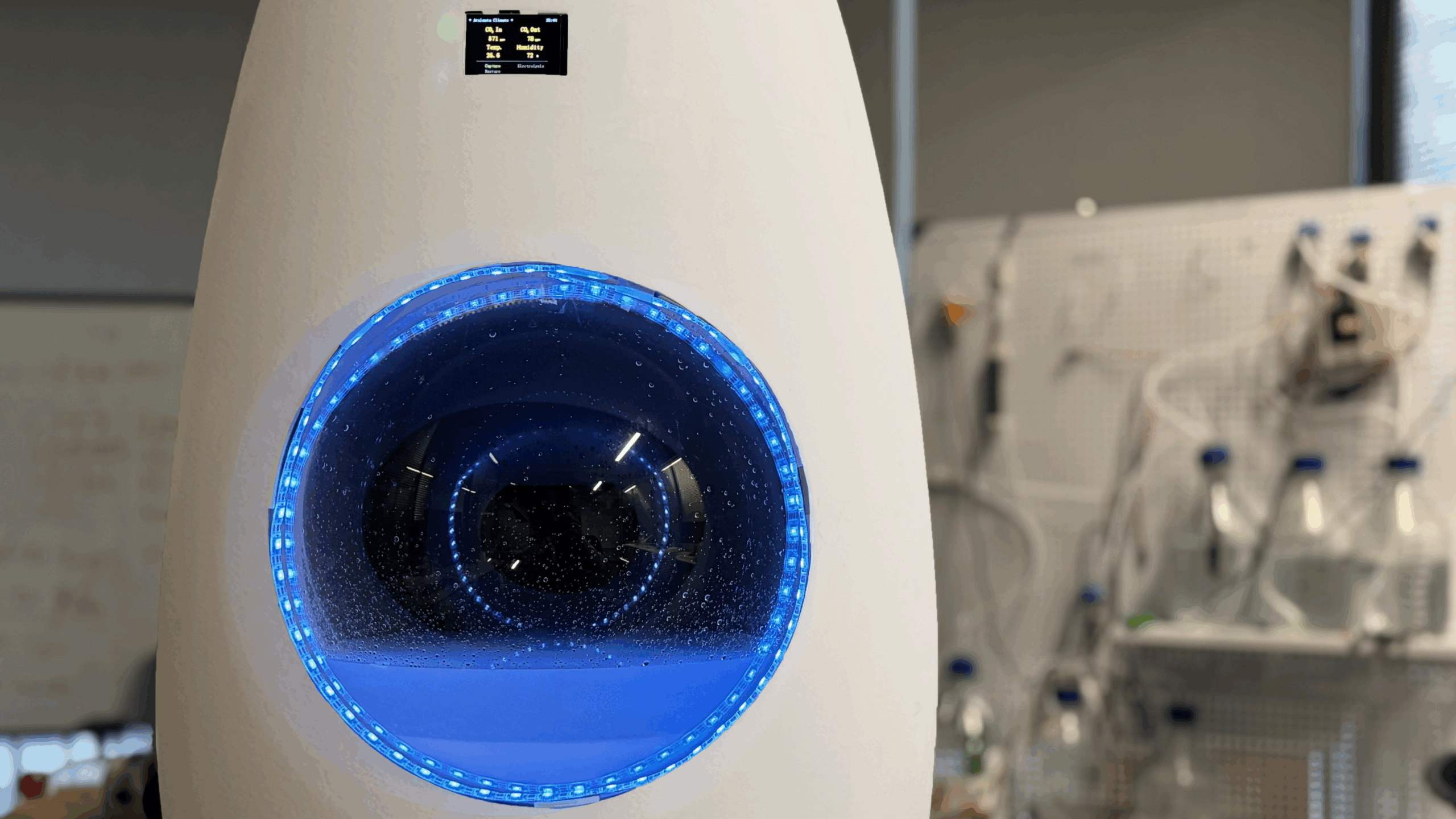
Looking to the Future
Response has been positive, with the design sparking multiple conversations. Initial institutional customers have tended to be split between universities on the forefront of technology and forward-thinking companies. For universities, the device not only provides a means of preserving student health but also serves an educational function to engage students in sustainability. They can see carbon dioxide concentrations on the screen and see the carbon captured in the tank. For companies, the draw tends to be split, with some more focused on employee health and some more focused on carbon removal, as part of their sustainability plans. For high-intensity and high-density workplaces, like trading floors, preserving the health and productivity of employees is particularly attractive. Personal customers have largely focused on health benefits and the ability to maximize their productivity.
Initial units will be delivered to a leading US university in January, with more universities and corporate offices to follow. The slightly smaller consumer version, currently available for pre-order on their website for $778, is set to be delivered in April 2026. Based on initial results, iterations will be developed, with more products on the way. The future goal is to develop integrated water, air, and carbon removal systems. They are also working on carbon-neutral shipping.
Climate change is a complex problem. Multiple solutions will be needed to address the causes and effects. The Ovi will not solve all climate problems on its own. But it can reduce carbon dioxide where it has the largest impact on human health. And it can help address the air quality problems caused by environmental challenges linked to climate change, such as wildfires. In the process, overall CO2 levels can be reduced, with potential energy savings from reduced ventilation needs.
Beyond the science of carbon capture, the product reduces carbon dioxide where it noticeably affects the customer. You get a sense of the technology coming together with a customer focus to create a compelling product. In this way, Atalanta can serve an example of how different perspectives can collaborate to create solutions to specific challenges. That brings up the question: What other challenges and opportunities are out there waiting for creative solutions?
Atalanta is moving fast and iterating quickly. I anticipate that we will be hearing more from them in the years to come.
Sign up for CleanTechnica’s Weekly Substack for Zach and Scott’s in-depth analyses and high level summaries, sign up for our daily newsletter, and follow us on Google News!
Have a tip for CleanTechnica? Want to advertise? Want to suggest a guest for our CleanTech Talk podcast? Contact us here.
Sign up for our daily newsletter for 15 new cleantech stories a day. Or sign up for our weekly one on top stories of the week if daily is too frequent.
CleanTechnica uses affiliate links. See our policy here.
CleanTechnica’s Comment Policy

